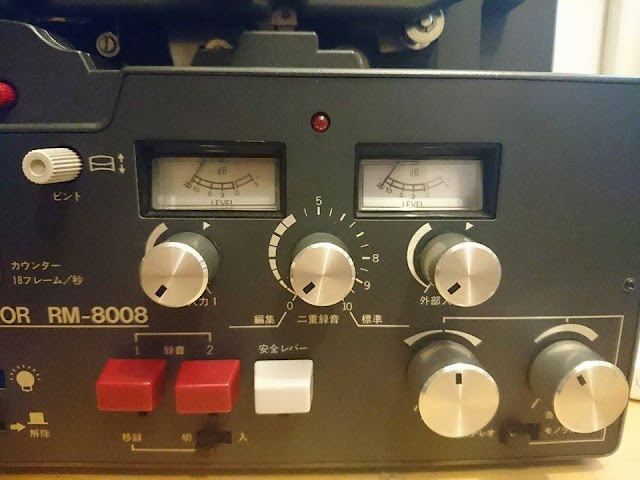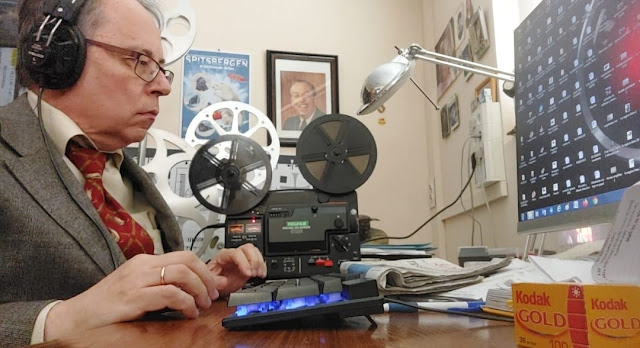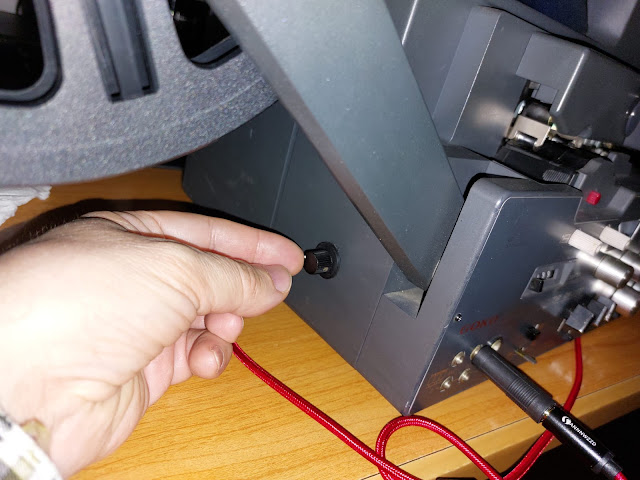The task for this week end was to synchronize the Spanish dub on track one of the CinemaScope feature film "Soylent Green", which I purchased from Derann Films taken from Kempsky negatives.
 |
| ¡No son muy claros los controles de la moviola Goko 8008 MKII! |
The first thing is to transfer the English sound of track one to the balance track 2, in order to preserve the original soundtrack. For this, I use the clone of the Fujicascope SD15, called in these parts Yelco 630 MS, which is the most compact stereo projector made. The tedious part of the job was split the full lengh feature film from its big reel to small 180-meter reels. I always do this type of intertrack transfers with the Yelco 630 because its sendust-type heads are indestructible and immune to wear.

Ideally, at this point, I would delete the sound from track one, but in general, to save time, I usually record the Spanish sound directly over the sound in another language.
Usually, I record the new audio with the Fujicascope SD25 projector, which is very suitable, since it has a quartz lock for speed and the fine adjustment of the cadence is located on the front of the machine. But in this case, to save time, I used the Moviola Goko 8008 Mark II version, which has a bright screen with halogen light, and, best of all, a fine adjustment of the speed on the left side, very comfortable for the sound technician... me!
 |
| Rare fine adjustment in the side or the Mark II! |
The first step, with the moviola, is to set to precisely 25 frames per second, with Renzo' stroboscopic device and the fine adjustment of speed on the side: when the tooth wheel appears like still, that means the speed is correct!
The work of synchronization, with the moviola, cannot be done all at once because it is difficult to maintain synchrony for more than ten minutes, adjusting slightly, when necessary, with the fine adjustment, while seeing the change of takes at same time on the film, in the moviola screen, and on the computer.
In old films, like this one, even using a quartz projector, synchronization is lost with reel changes, because the masters are not the same in film and digital version: usually have the last scene of each reel longer or shorter, and although diference can be of not many frames, but enough to have to start over at that point.
Every time I start a new sequence to sync, I move four frames forward in the film from where I am in the digital version: that is for cover the little delay I get when I hit the starter on the moviola.
As in my case, I cannot make the recording in the same day, but taking advantage of lost moments, it is very important, after a long interruption, to check the recording level before starting a new sequence. Naturally, I always record the sound at manual recording level. At the end of the recording days, I return the entire film to a large reel, and check the result, usually with a Fumeo 9119.
RESUME. To sync audio from a digital source, such as a DVD, to a film print, a good projector, if technically suitable, is the best for maximum quality, but if time is of the essence, or for short films or mere sound effects, a moviola can be enough.



No hay comentarios:
Publicar un comentario